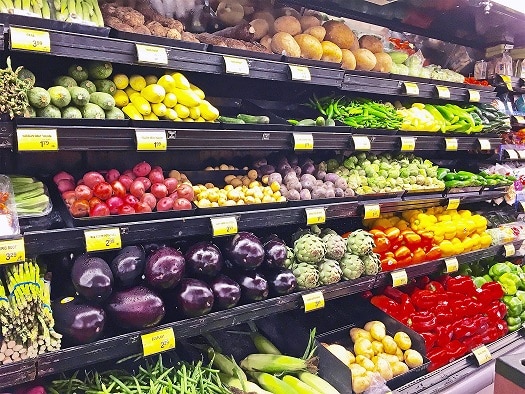Grocery inflation is outpacing the family budgets of many Americans. Photo courtesy Bureau of Labor Statistics.
According to the latest inflation data published June 13, 2023, the average price of food in the United States increased 6.7% in the 12 months ending in May. This after posting an annual increase of 7.7% in April. The U.S. Labor Department’s Bureau of Labor Statistics (BLS) as recently as August 2022 showed the rate of inflation for food was 11.4%, the highest since May 1979.
Food is a major component within the BLS’s Consumer Price Index (CPI). This inflation category is divided into two smaller groups: the “Food at home” index and the “Food away from home” index.
The “Food at home” index covers how prices have changed for foods found in grocery stores, while the “Food away from home” index tracks how prices have changed for service meals and snacks. As an example, the CPI for April separately showed prices for the two logged year-over-year increases of 5.8 and 8.3%.
Some of the foods that the BLS surveys every month for inflation include meats, poultry, fish, eggs, cereal, bakery products, dairy, beverages, and various fruits and vegetables. Prices for these items have increased dramatically in the past 12 months through May 2023.
Grocery prices over time increased, sometimes substantially, for specific food items such as bananas, oranges, bacon, ground beef, steak, milk, eggs, cheese, flour, rice, potato chips, coffee, and more. Food was up overall 6.7%; Food at home up 5.8%; Cereals and bakery products up 10.7%; Meats, poultry, fish, and eggs up .3%; Dairy and related products up 4.6%; Fruits and vegetables up 2.7%; Non-alcoholic beverages and beverages materials up 8.7%; Other food at home up 9.2%; Food away from home up 8.3%.
The overall U.S. inflation rate on food over the last decade went from 1.1% in 2013 to 10.4% in 2022.
Data Source: U.S. Bureau of Labor Statistics: Food and beverages in U.S. city average, all urban consumers, not seasonally adjusted. CPI-All Urban Consumers.
The change in food prices is a component of the CPI’s “all items” index and so they are part of the data set that is used in calculating inflation rates. Food prices tend to be more volatile, thus, they are not included when calculating core inflation rates.





 RSS - Posts
RSS - Posts
Michael Reed, I’m on a fixed (social security/no pension) income and pay all bills for my household of two (includes my older sister whose social security is meager). I have definitely felt the rising prices. I buy bread for deer who visit in my neighborhood. At Food Lion, last year I paid 50 cents a loaf for cheap bread that has gone to $1.29 a loaf now. Most bread is aroud $3.00 a loaf now. Dog food I buy (Pedigree, large can) there was around $1.18 a can for years then went to $1.89 during COVID now suddenly this year jumped to $2.69. Milk is still very reasonable–it probably has price controls. Cheap tomato, mushroom and chicken soup (off brand) was around 50 to 60 cents for years. Now it’s over $1.00 a can and Campbell’s is about $1.89. I think it’s bad. During COVID, salaries were raised (I was working and got $2.00 more per hour). Maybe salaries have risen so much that prices have gone up, too. I don’t begrudge basic farmers who have always gotten low dollars for their produce and even meat. I wonder if they are faring better but I’ll guess its the stores and middle men who are soaking up the funds. Houses in Charlotte have gone up about $100,000 over past few years and rent is out of sight. Our over-population is driving that I’d guess.